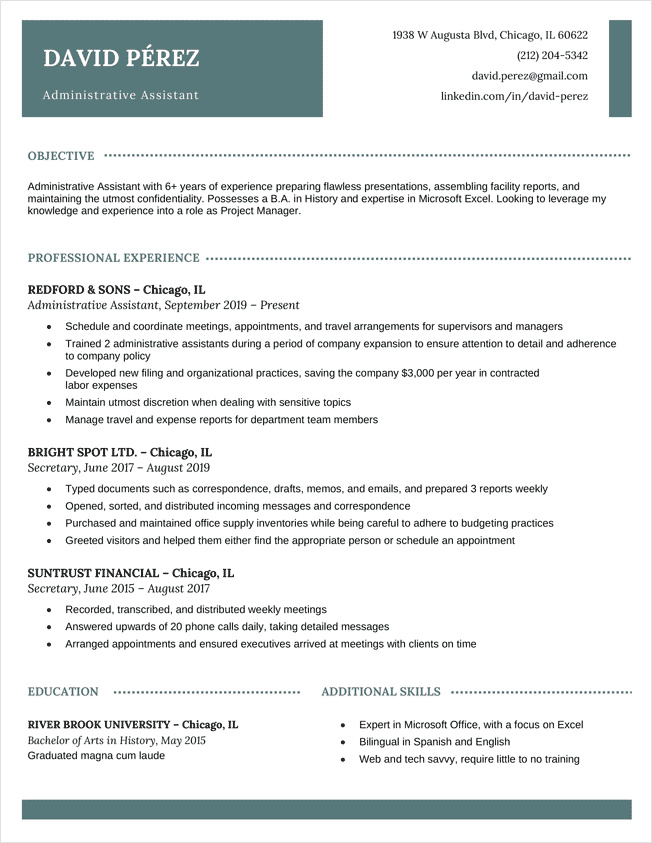When it comes to finding a job in the IT industry, having a professional resume is essential. Your resume serves as a representation of your skills, qualifications, and experience, and it is often the first impression you make on potential employers. A well-crafted IT resume can make all the difference in landing your dream job. In this article, we will explore the importance of a professional IT resume, what to include in it, and how to write one that stands out from the competition.
What is a Professional IT Resume?
A professional IT resume is a document that highlights your technical skills, achievements, and work experience in the field of information technology. It is designed to showcase your qualifications and demonstrate your ability to contribute to an organization’s IT department. A professional IT resume should be concise, easy to read, and tailored to the specific job you are applying for.
Why Do You Need a Professional IT Resume?
In a competitive job market, having a professional IT resume is crucial for several reasons:
- First Impressions: Your resume is often the first interaction potential employers have with you. A well-written and well-designed resume can leave a positive impression and increase your chances of getting an interview.
- Showcasing Your Skills: An IT resume allows you to highlight your technical skills and expertise. It provides a snapshot of your abilities and demonstrates why you are qualified for the position.
- Stand Out from the Competition: With many candidates vying for the same IT job, a professional resume can help you stand out. It allows you to differentiate yourself from other applicants and showcase your unique qualifications.
- Pass Applicant Tracking Systems (ATS): Many employers use ATS software to scan resumes for keywords and qualifications. By crafting a professional IT resume, you increase your chances of passing through these systems and reaching the hiring manager’s desk.
- Confidence Boost: Having a well-prepared resume can boost your confidence during job interviews. It serves as a reference for you to speak confidently about your skills and experiences.
What to Include in a Professional IT Resume
A professional IT resume should include the following sections:
- Contact Information: Include your name, phone number, email address, and LinkedIn profile link.
- Summary or Objective Statement: Write a summary or objective statement that highlights your skills and career goals.
- Technical Skills: List your technical skills, such as programming languages, operating systems, databases, and software proficiency.
- Work Experience: Provide a detailed list of your previous work experience, including job titles, company names, dates of employment, and a description of your responsibilities and achievements.
- Education: Include your educational background, degrees, certifications, and any relevant coursework or projects.
- Awards and Honors: If applicable, mention any awards, honors, or recognition you have received in the IT field.
- Professional Development: Highlight any professional development courses, workshops, or conferences you have attended to enhance your IT skills.
- References: It is optional to include references on your resume, but you can mention that they are available upon request.
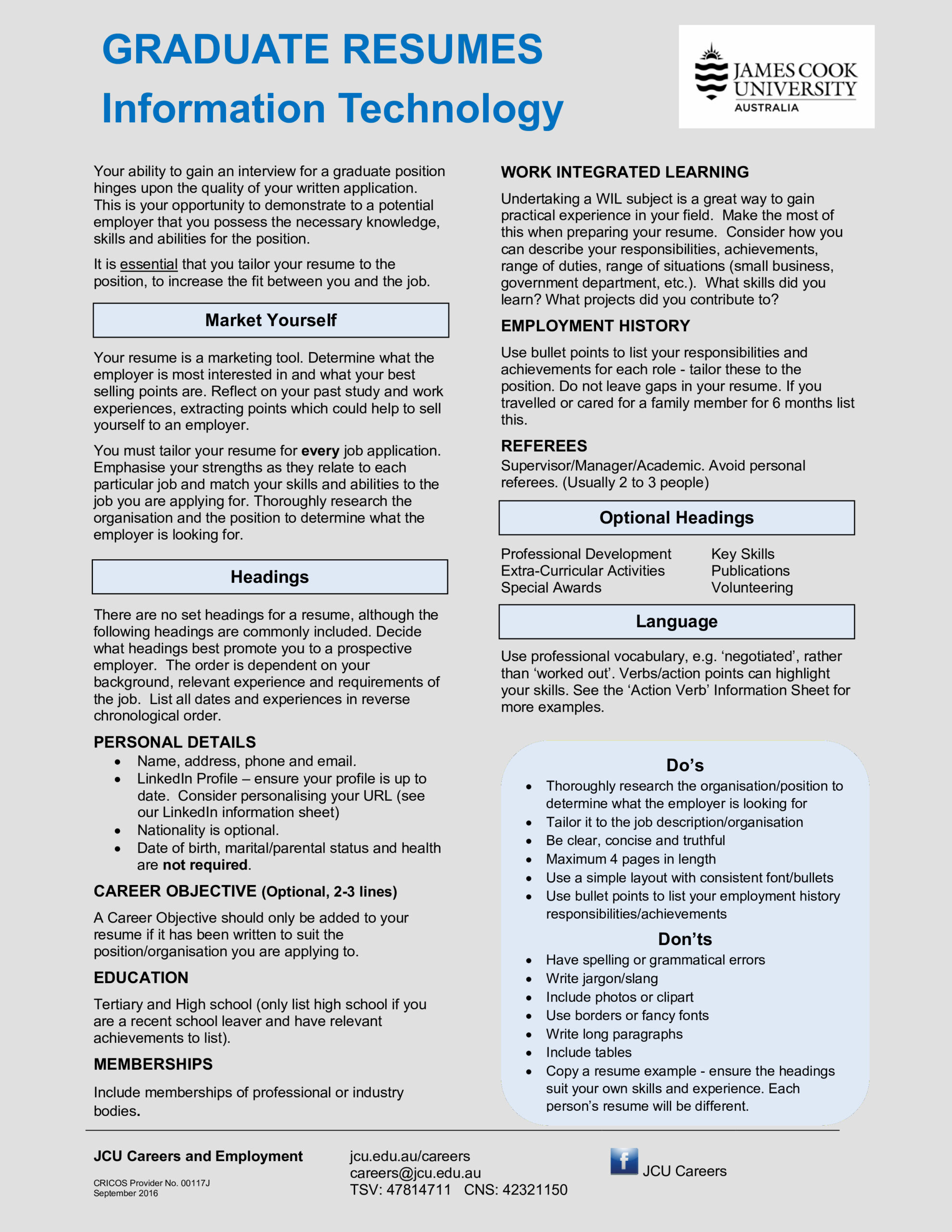
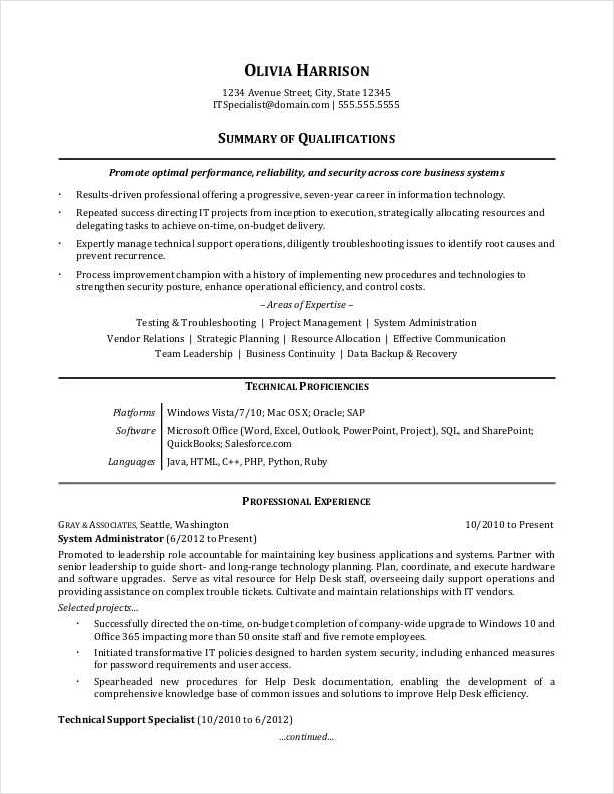
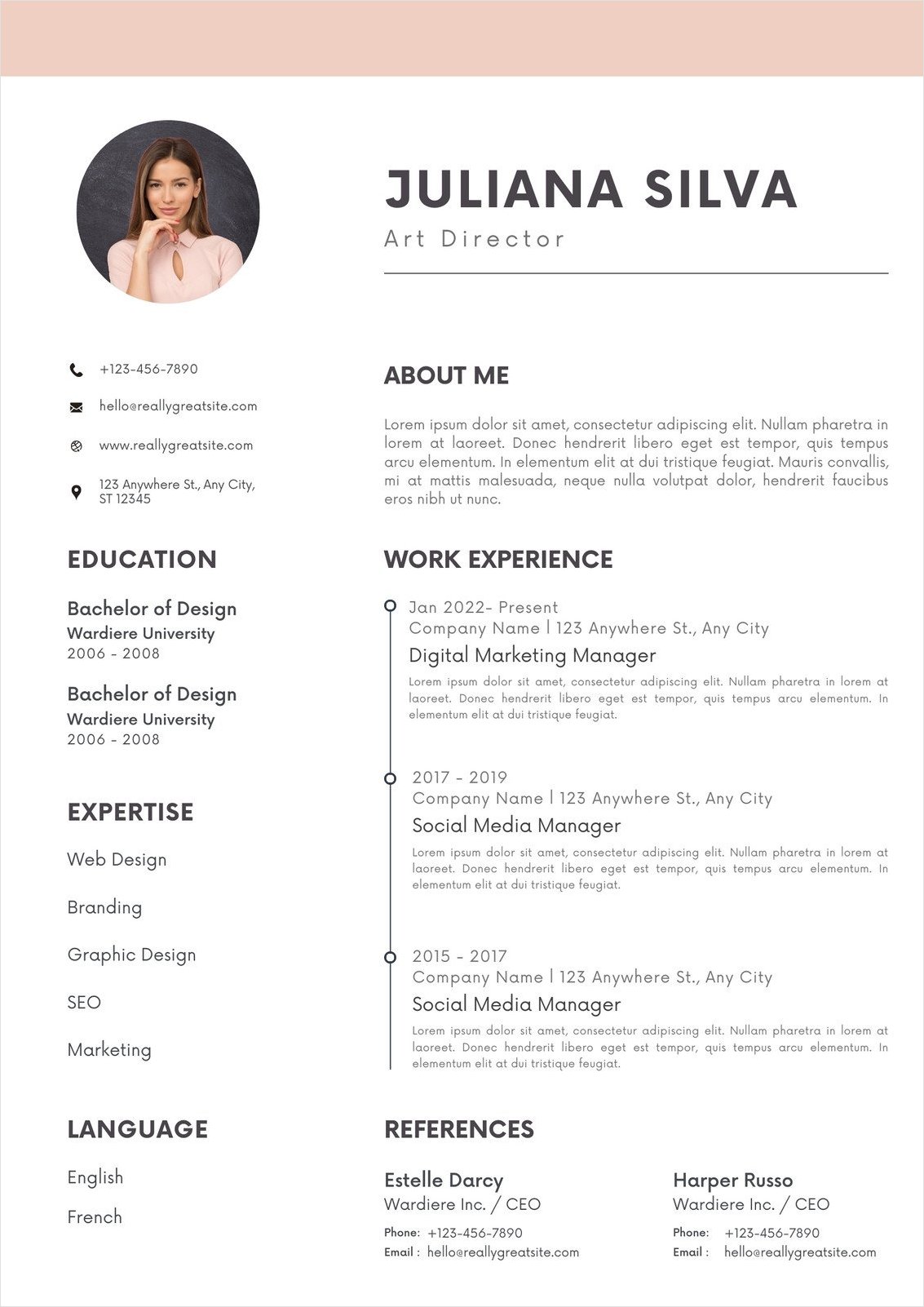
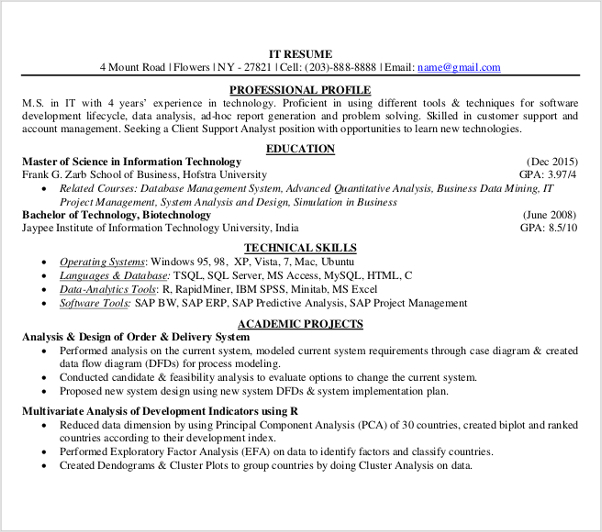
How to Write a Professional IT Resume
Follow these tips to write a professional IT resume that stands out:
- Keep it concise: Limit your resume to one or two pages. Be selective in choosing the most relevant information and avoid unnecessary details.
- Use action verbs: Begin each bullet point in your work experience section with a strong action verb to convey your accomplishments and responsibilities.
- Quantify your achievements: Whenever possible, include numbers, percentages, or other metrics to quantify your achievements and demonstrate the impact you made in previous roles.
- Customize it: Tailor your resume to the specific job you are applying for. Research the company and the position requirements to ensure your resume aligns with their needs.
- Proofread and edit: Double-check your resume for grammatical errors, typos, and formatting inconsistencies. Ask a friend or family member to review it as well.
- Use a professional format: Choose a clean and professional resume template that is easy to read. Use bullet points, headings, and subheadings to organize your information.
Remember, your IT resume is a reflection of your professional skills and experiences. Take the time to craft a well-written and tailored resume that highlights your qualifications and sets you apart from the competition. With a professional IT resume in hand, you will be well-equipped to secure your desired position in the IT industry.
Professional IT Resume Template Word – Download
